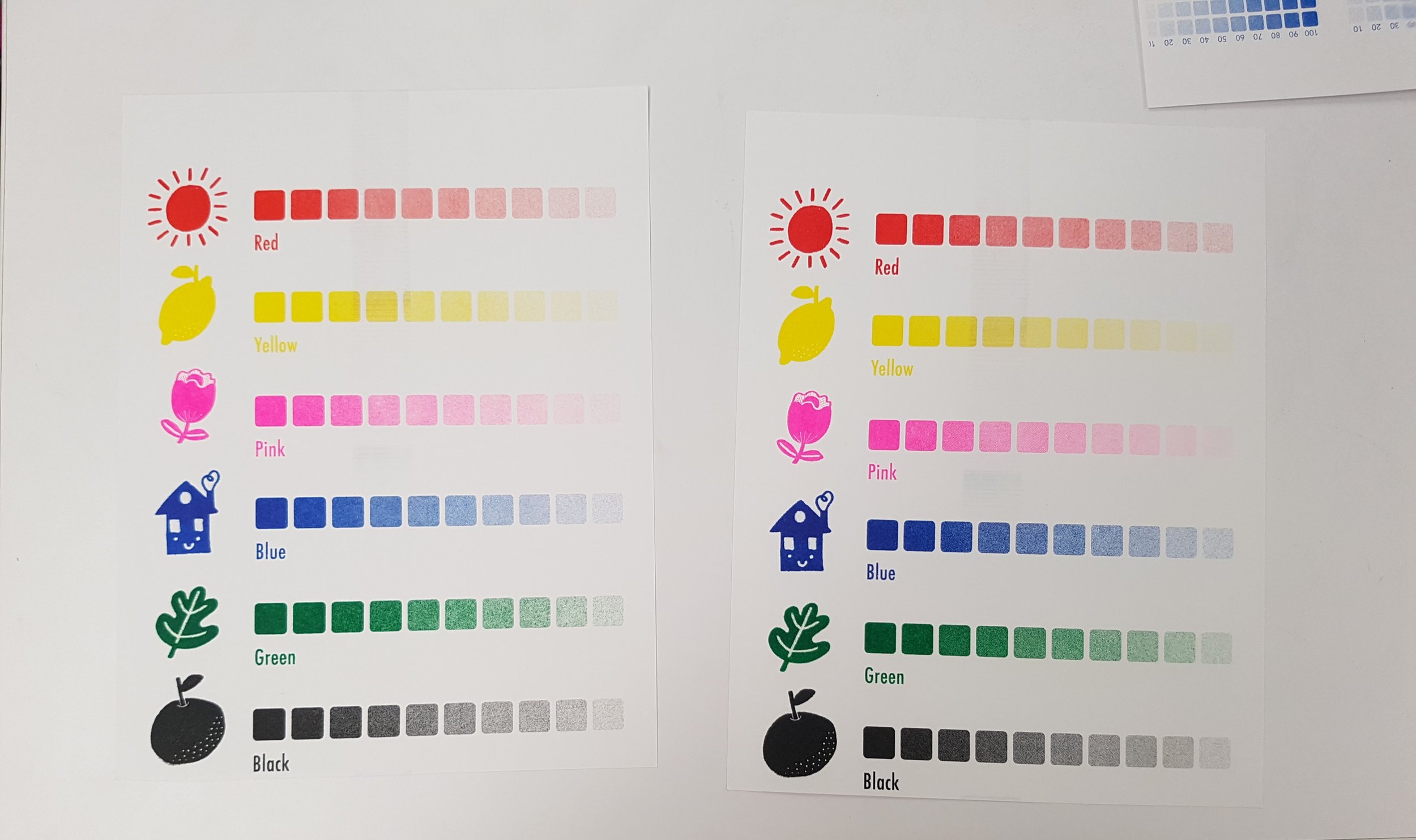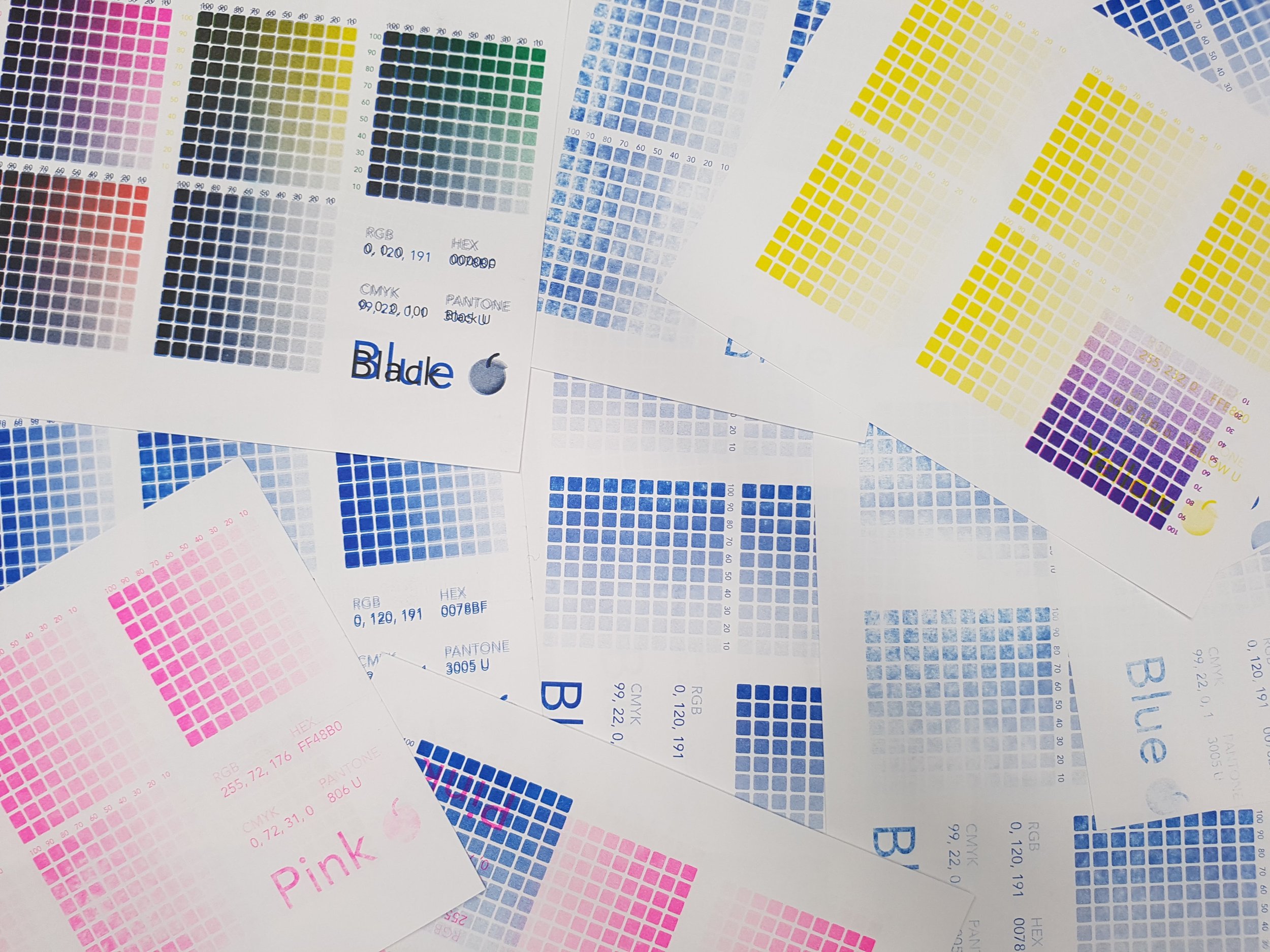More Risograph, Less Reading
What I did this week:
Finished reading Emily Chao’s article
Free write about things I’m actually interested in doing research about
Acquired autoethnographies from secondary reading
Went into the IDM Print Lab and did some riso print experiments
Emailed people at the library to find more resources
Submitted request for more graphic novels from the library
Started an outline of what the typical Thai-Chinese New Years celebration looks like
Organized some upcoming interviews of young adult Chinese diaspora members
Started creating interview guides for upcoming interviews
Started Arena board of illustrations having to do with Chinese New Year and Chinese festivals
In general, I did very little reading and mostly did planning and other more enjoyable things. I only managed to read one thing this week, the last half of Emily Chao’s “The Maoist Shaman and the Madman”. Even reading that took a lot out of me. After reading it, I had to sleep for 7 hours. But at least I learned a little bit more about rituals and really solidified that kind of research I did not want to do. Basically, I will do anything possible to get out of reading.
Emily Chao’s “The Maoist Shaman and the Madman”
The last half of the article talked about why the ritual failed. For context, there was a madman in the poor village of East Wind. A shaman was called to drive away from the demons that lived inside him. She burned incense and set up colored flags to all upon the gods, all recognizable shamanic rituals. However, she imbued the text of her shamanic rituals with calls for Chairman Mao, Zhou Enlai, and Deng Xiaoping. After the ritual ended, the collective reaction from the villagers can be described colloquially as "what the fuck is this shit?". Most villagers viewed her as a con woman looking to make a quick buck. Essentially, this shaman’s ritual failed because 1) it didn’t fit with what the villagers recognized was a shaman ritual, 2) her Maoist chants were invoking the times of Mao, which is attributed to a lot of bad memories for the villagers, and 3) the audience themselves had evolved to view rituals as something different. Read my full notes here.
The main thing I learned from this article is the multi-faceted nature of rituals. Rituals can be identity, source of power, engines of knowledge, embodied lived experiences, and etc. Rituals tend to only be able to exist within the context of the audience and are resistant to quick changes. That being said, rituals that do not evolve do not survive to contemporary times as it needs to be adaptable into the modern context. Lastly, rituals are resilient. Many find a way to survive and many dead ones can be quickly revived if the effort is put into it.
While I don’t deny that I learned a lot in this process, at what cost must I take to do so? Are the mental strife and emotional trauma I feel each time I do it worth it? I don’t think so. This will be the last academic paper I read.
What do I actually want to do research on?
Following advice from my 1:1 meeting with Professor Ahmed, I did some free writing on what I actually wanted to know about my topic. You can read the full document here. My thoughts mainly centered around these points.
This project started out as a personal interest into something I noticed in my own life: that even though my family celebrated all these festivals my whole childhood, I have yet to celebrate any of them on my own. Why?
As I do have a personal connection with the topic, I am still very interested in doing an illustrated autoethnography about it. It would be nice to talk to my mom more too, even if it’s part of doing my thesis.
As life gets harder, I find myself gravitating towards my wheelhouse and comfort zone: UX research and creating tools. I’m not interested in anything deeper than that. I just want to make a tool that is useful to people. The tool in this case being something that will help make celebrating Chinese festivals (most probably will only do Chinese New Years) seem less daunting and at the same time educates people a little about each ritual.
However, the one twist on this tool that I want to create is that I want it to include illustrations, specifically ones made with the risograph. It’s been an interest of mine for a long time and hell, I might never have such easy access to one ever again in my life so fuck it, I’m going to use the hell out of it.
I much prefer talking to people than reading about what people have said. It’s definitely falling back on what I’m used to doing and what I know how to do. But if I enjoy doing it, then why not?
Here are some research questions that I came up with
How are rituals celebrated in Chinese festivals passed down?
What are some obstacles younger Chinese diaspora (YCD) members face that may be preventing them from celebrating festivals?
How might tools & illustrations make it easier to celebrate festivals?
Why are some festivals celebrated by YCD & other festivals not?
How are festivals currently celebrated in YCD communities?
Does YCD find celebrating these festivals important?
How crucial are the roles of childhood memories contributed to the continual celebration of festivals?
What preparations does celebrating Chinese New Year entail? Is this realistic for YCD?
How do Chinese New Year celebrations differ by diaspora?
What part of Chinese New Year does YCD have the fondest memories of?
What part of Chinese New Year does YCD like the most?
What parts of Chinese New Year does YCD want to continue to celebrate and what will they let go? - how will the festival evolve in the coming years?
Going forward, my plan for research includes creating my autoethnography, interviewing other young adult members of the Chinese diaspora about their experience celebrating Chinese festivals, and experimenting with illustrations on the risograph. I plan on going on to Thailand this December and January too, just in time to observe preparations for Chinese New Years. I plan to make observations and take pictures while I’m there. That being said, I will also look into museums about the Chinese diaspora in the U.S. while I’m here and find a time to go.
Acquired autoethnographies and graphic novel from the library
From the list of books I wanted to get I was able to acquire:
Blankets by Craig Thompson
Meatless Days by Sara Suleri
Boys will be boys by Sara Suleri
Books I still want to read:
Persepolis by Marjane Satrapi
Boxers and Saints by Gene Luen Yang
American Born Chinese by Gene Luen Yang
Lion Dancer: Ernie Wan’s Chinese New Years
Risograph Adventures
Instead of reading, I did the more enjoyable thing of experimenting with the risograph. I got trained last week, so I was able to book 3 hours in the print lab to test it out. Before I went in, I did some research by watching a video of an artist (Instagram @furrylittlepeach) I really love talking through her process of making her risograph prints. Here were the main points that I learned.
Use stencil.wiki/colors to get the HEX codes for the riso ink colors
You can get a lot of different colors by changing the opacity
Once you start printing colors on top of each other (riso ink is quite transparent), you can get almost limitless colors
Draw out the illustration in different layers with black. Each layer is a different opacity. Group them all together and apply a color blending mode on top with the riso ink color so that you can see what it will look like when it is printed.
During my time last week, I did 2 tests. I did a color test of all the inks in the space and their opacity. The other test was for color mixing different colors of ink. It turned out to be a lot harder than I thought and I failed a lot. Lots of prints were misaligned, streaked, or printed over by accident. Luckily, at least I learned a lot.
Emailed librarians
There are still more non-academic books that I wanted to read; however, I don’t know how to find them. So, I went through the guide that the librarian talked to us about and found emails for people who worked in the subjects that I am interested in and emailed them. Here is who I emailed and what I asked from each of them.
Laurie Murphy - She specializes in illustrations, comics, and graphic novels
Chinese festivals, particularly Chinese New Year
Chinese diaspora experience
Examples of autoethonographies/autobiographies in graphic novel form
Beth Sara Katzoff - She specializes in East Asians Studies
Chinese festivals, particularly Chinese New Year
How festivals differ within the Chinese diaspora
How Chinese festivals have evolved over the centuries
How Chinese festivals are being celebrated now in various communities
Illustrations of Chinese festivals
Giana Ricci - She specializes in resources for artists and finding images
Chinese festivals, particularly Chinese New Year
Chinese diaspora experience
Guides on how to use the Risograph machine
Examples of risoprints, particularly if the subject matter is about Chinese festivals or if the prints were made by a Chinese diaspora member
Outline of typical Thai-Chinese New Years celebration for my autoethnography
In starting my autoethnography project, I created an outline of what typical Thai-Chinese New Years celebration entails. You can read the current outline here. The goal is that this outline will help jog my memory. I have also reached out to my mom to ask for her help to fill this outline out. She is more than excited.
Interview Guide and interviewing young adult Chinese diaspora members
I also started reaching out to young adult Chinese diaspora members to ask them to interview about their experience with Chinese festivals, particularly Chinese New Year. In preparation, I started creating an interview guide. You can read my current interview guide template here.
Are.na Board
Lastly, I started an arena board that I will use to gather my project inspirations and references. So far, I’ve found that there isn’t as much on arena itself as I thought. So I’ve been searching elsewhere on Behance and Dribbble. You can view my board here.
To-Do List
Looking
Chinese new years illustrations and artwork
Scientific illustrations of ecosystems/rituals
Searching
Autoethnographies written by people within the Chinese diaspora
Riso-printing basics and color mixing templates
Graphic novels about the Chinese diaspora
Children’s books about Chinese new years
My plan for the upcoming weeks
Create an outline of a typical Thai-Chinese New Years festival
Read more into the history of Chinese New Years
Read non-academic papers about rituals / Watch videos about rituals
Read autoethnographies
Plan my autoethnography
Start thinking about who I want to interview and what I would want to ask
Create an interview guide for the Chinese diaspora community
Talk to people with young children about why they pass festivals down to them
Start sketching things I would want to include in my autoethnography
Find podcasts to listen to about Chinese diaspora, Chinese festivals, and rituals






